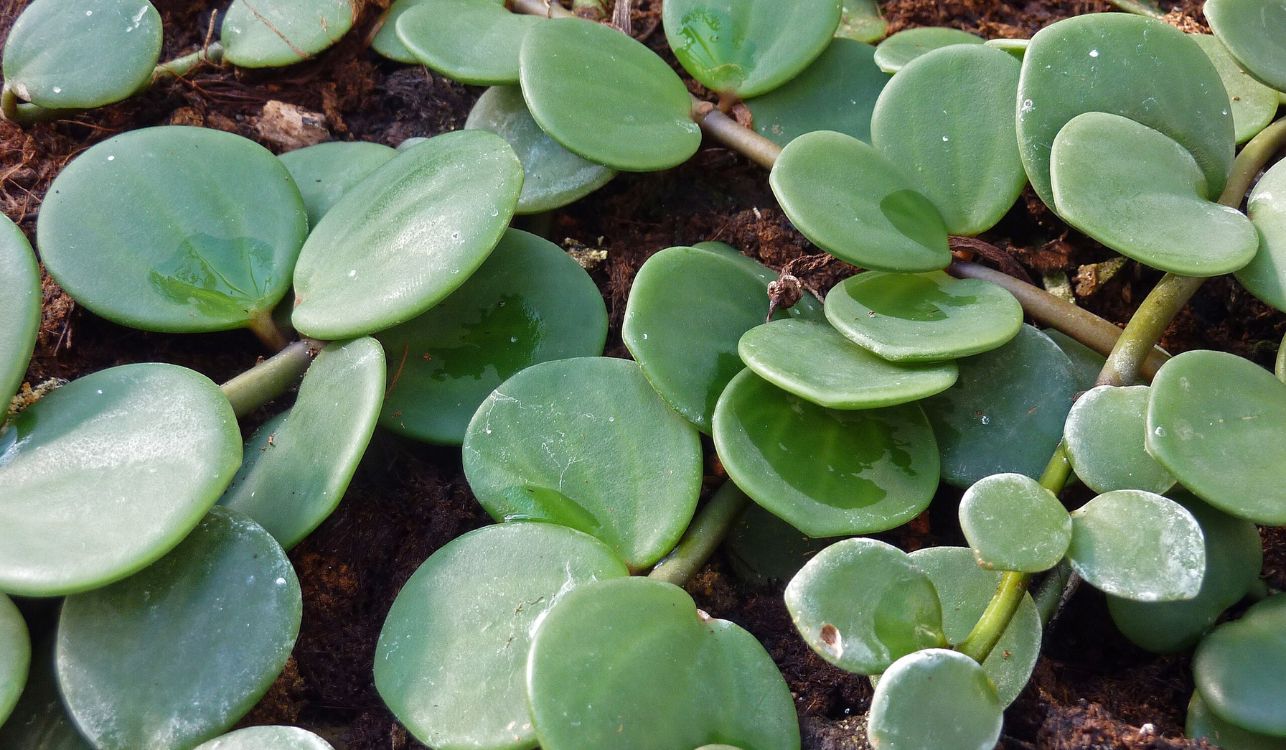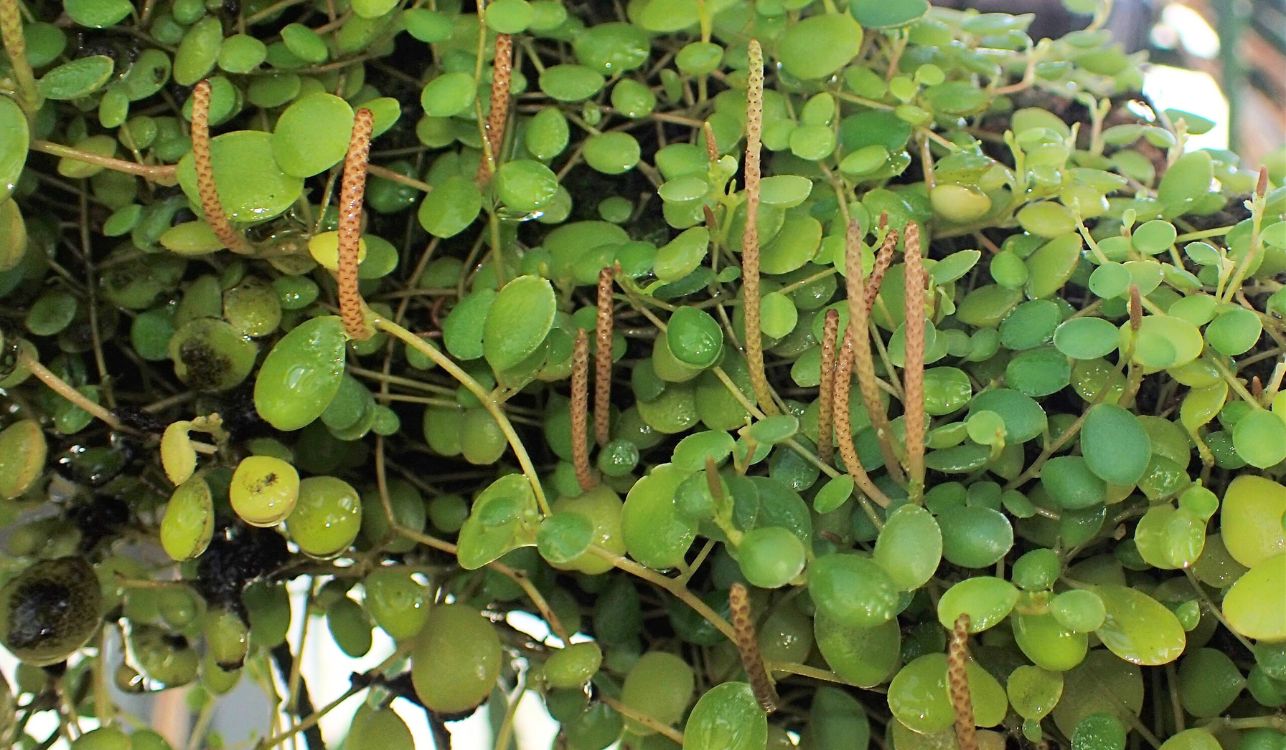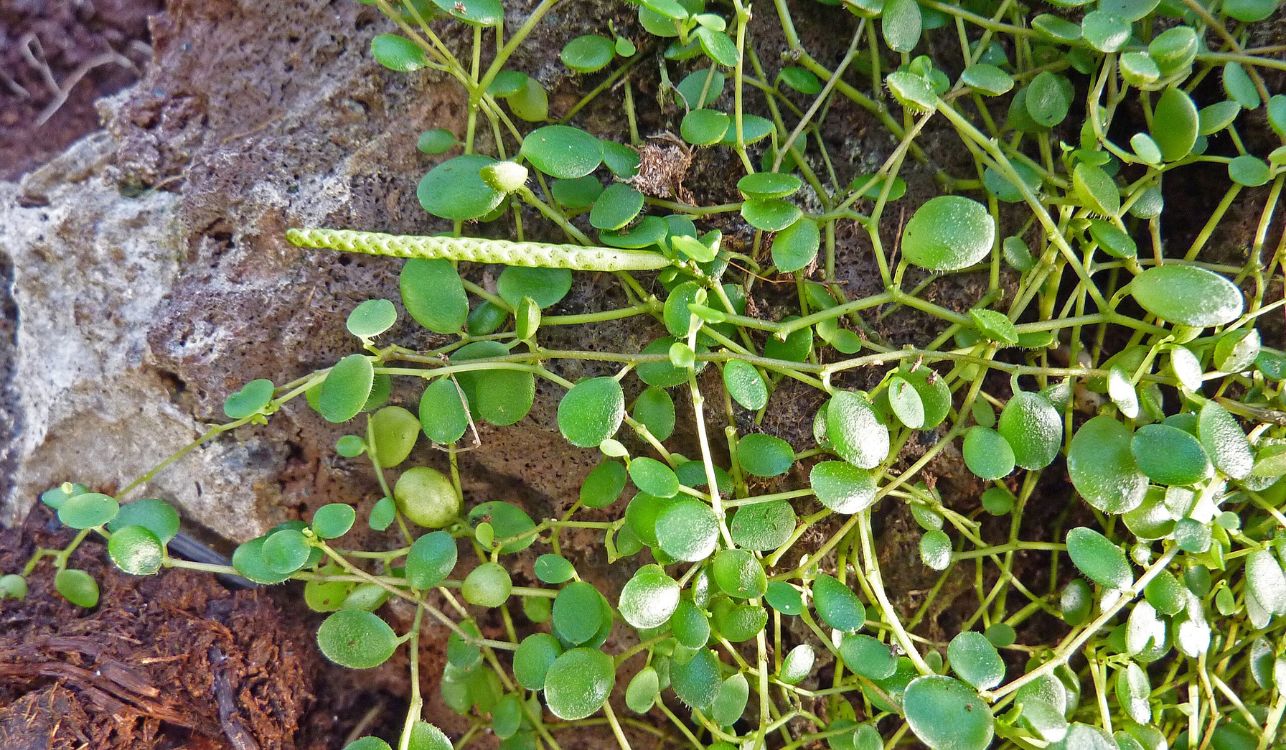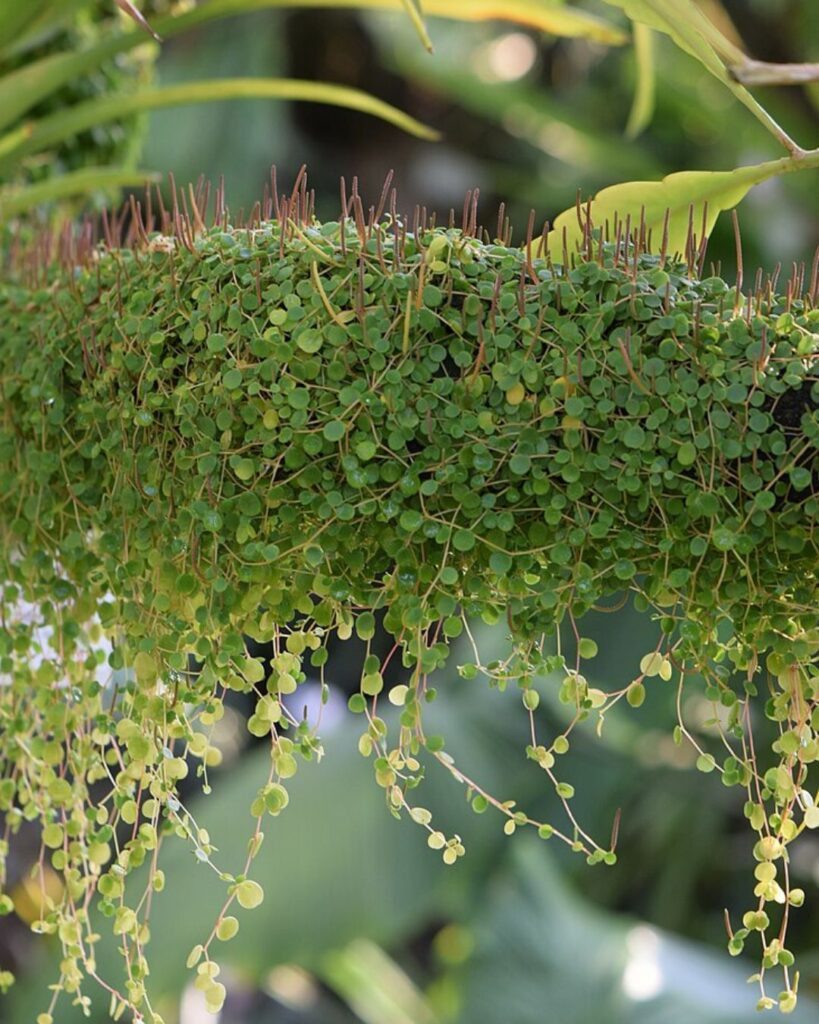
The Creeping Buttons, scientifically known as Peperomia rotundifolia, is a succulent plant with great charm and versatility that has won the hearts of many gardening enthusiasts. This species belongs to the Piperaceae family and is native to the tropical forest regions of North to South America, such as Brazil and Mexico. In its natural habitat, it grows as an epiphyte and creeper on tree trunks or among rocks. Do not confuse the Creeping Buttons with the Turtle Necklace (Peperomia prostrata).
The Creeping Buttons is perennial and is distinguished by its round, succulent leaves with a flattened and round shape. Its leaves, which can vary in size from 0.4 to 1.2 inches (1 to 3 centimeters), have a vibrant green color and a fleshy texture. The common name of the plant, “Creeping Buttons,” is a direct reference to the shape of its leaves, which resemble small buttons arranged along the delicate stems. The variety of leaf colors can include shades of light green to dark green and even silver variations, depending on the variety, subspecies, or cultivar. The known subspecies of Peperomia rotundifolia are ovata, pilosior, subelliptica, subglabrilimba, and obcordata.
The stems, on the other hand, are thin and branched, allowing the plant to create a dense, tangled, stunning, and pendant foliage. Additionally, the Creeping Buttons can produce small, elongated, cylindrical, upright inflorescences in shades of green to purplish with tiny flowers. Despite being curious, these inflorescences are relatively discreet compared to the beauty of its leaves.

This species has slow growth, making it ideal for indoor spaces or shaded garden areas. The Creeping Buttons is known for its resilience and easy maintenance, making it a popular choice for gardeners from beginners to experienced ones and a true favorite of succulent collectors.
The Creeping Buttons is a versatile plant that can be used in various ways both in landscaping and decoration. Due to its trailing nature, it is often used in hanging baskets, decorative pots, and window boxes, where its dense leaves create a charming cascading effect. Moreover, this plant is an excellent choice for miniature gardens, where its slow growth, aesthetic appeal, and small leaves provide an interesting and low-maintenance look. Care should be taken when handling it, as its fragile stems can break with rough movements.
Its use also extends to indoor spaces, where the Creeping Buttons adapts well to areas with abundant indirect light or partial shade. It is an easy-to-care-for plant, ideal for workspaces, living rooms, and even bathrooms. It adds a touch of elegance and freshness to any environment.
To successfully cultivate the Creeping Buttons, it is important to understand its specific requirements. This plant thrives in locations with indirect to partial light, avoiding direct sunlight that can cause burns to its sensitive leaves. As for watering, the soil should be kept slightly moist, but avoiding overwatering. Remember that it is a succulent plant. So, let the substrate dry slightly between waterings, and use a well-draining pot to prevent excessive water buildup. It is ideal to use a mixture of two parts succulent substrate and one part epiphytic substrate (for orchids, ferns, or bromeliads).

Regarding temperature, the Creeping Buttons prefers tropical and subtropical climates. Keeping it in environments with temperatures between 64°F and 75°F (18°C and 24°C) is ideal for its development. It also appreciates high air humidity, preferably above 70%. If the humidity in your home is too low, consider using an electric humidifier.
Fertilization can be done during spring and summer with a diluted balanced fertilizer applied monthly. Since its growth is slow, use a smaller dose than what is used for other plants. Fertilizers specifically designed for cacti and succulents are most suitable for Creeping Buttons.
Multiplying Creeping Buttons can be relatively easy through division of rooted branches or stem cuttings. To make cuttings, simply cut a segment of a healthy stem with some leaves, ensuring that at least one node is present, and plant it in a light and moist substrate, lightly covering it with substrate while keeping the leaves exposed. Keeping the cuttings in an environment with indirect light and adequate humidity will favor root development. Over time, the cuttings will develop roots and start to grow, forming new Creeping Buttons plants.


